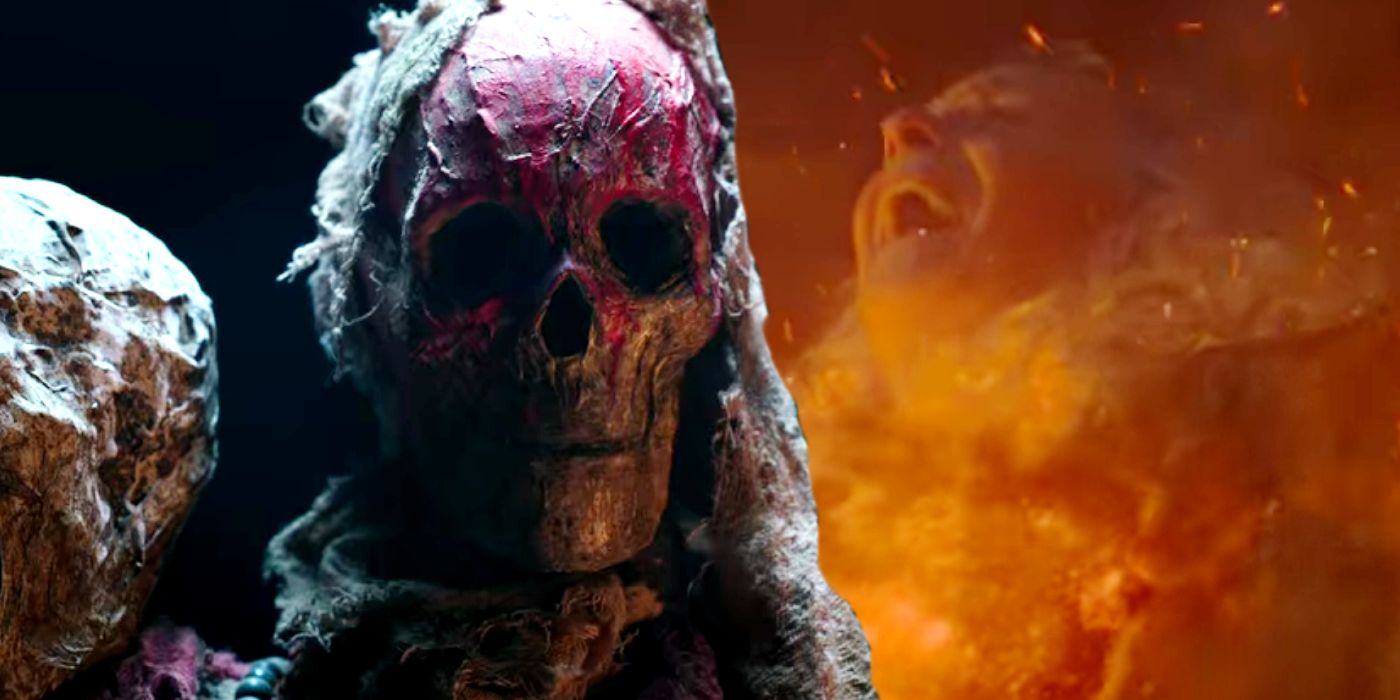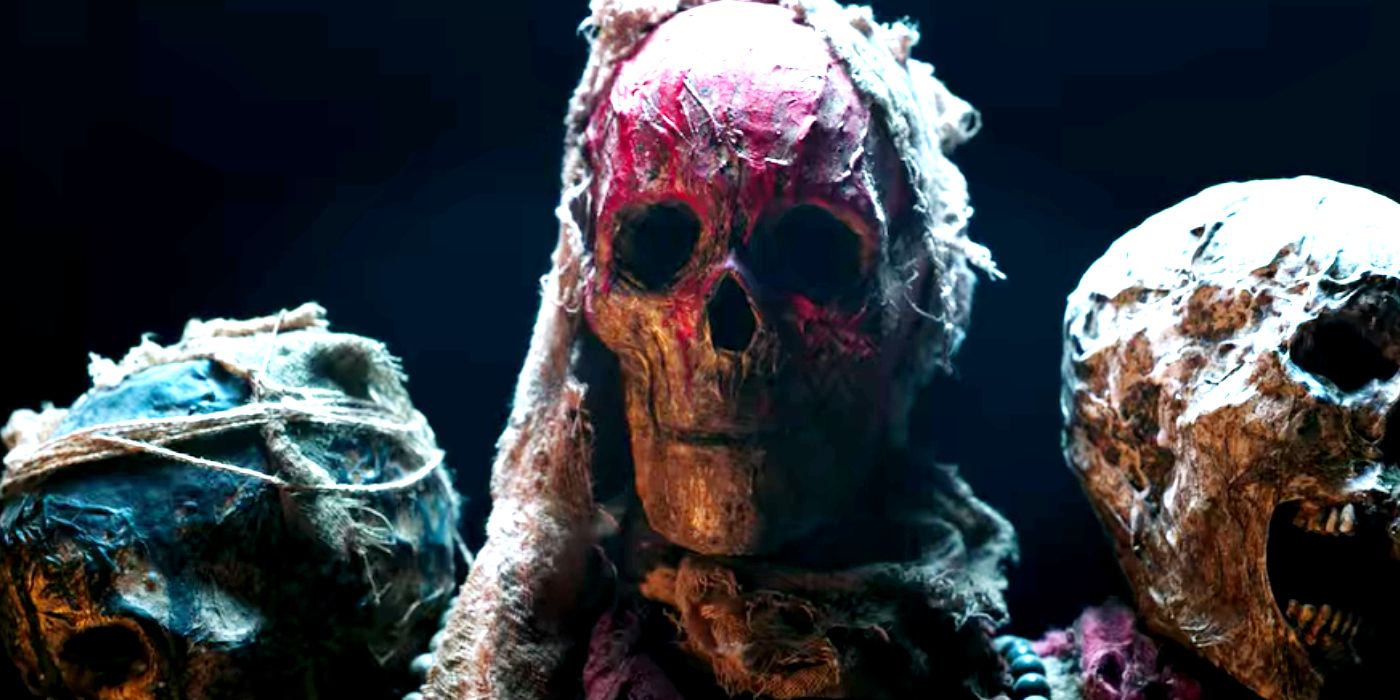Warning: Contains spoilers for The Witcher season 2.
Ever since The Witcher season 2 released its episode list, speculation has been rife as to who Voleth Meir is - so who is the "Deathless Mother" introduced in the Netflix show? Netflix's The Witcher has done an admirable job of using elements of both the original Witcher book series, and the games - both of which earned the franchise devoted fans. However, not every aspect of the show uses the exact characters and plots of either source material.
This is especially true when it comes to Voleth Meir, who - despite being ostensibly the major villain of The Witcher season 2 - seemingly doesn't originate directly from any of the aforementioned source materials. This serves well for the surprise of her reveal, as any predictions wouldn't have been able to anticipate that a totally new figure would be entering the series in such a major way. However, that doesn't mean The Witcher season 2 villain doesn't appear to take inspiration from anywhere.
Voleth Meir is an ancient entity who feeds off of pain that Geralt states predates the Conjunction of the Spheres, which would make her over a thousand years old at the point the viewer sees her in The Witcher season 2. In episode 7 - helpfully titled after her - it's explained that the first Witchers were made in order to imprison Voleth Meir, making it clear she's a monumental threat, and that the "Deathless Mother" title reflects her own seeming invulnerability. Interestingly, it's established that because of her entrapment, she often makes deals with the desperate in order to have her will carried out - and as it's later revealed, to manipulate those who do by making their suffering worse so she can grow more powerful. With all of this in mind, it seems the Voleth Meir takes from two characters created for the Witcher video games - Gaunter O'Dimm and the Crones - although neither of these entities seems to share the Deathless Mother's ability to possess the bodies of others.
The three skulls at the shrine of the Deathless Mother appear to be a direct allusion to the three Crones who serve as reoccurring antagonists in Witcher 3. The Crones were initially thought to be in The Witcher season 2 because the hut that Voleth Meir is imprisoned in resembles the one at which players encounter the witches, who meet Ciri in Witcher 3 and also wish to use her Elder Blood to increase their powers - although they intend to eat Ciri, not to simply possess her body as Voleth Meir does. Similarly, the Crones are also able to transform into appearances according to the desires of the person they are attempting to trick, though this is only shown once when they appear in younger forms in order to seduce a man so they could cook and eat him. As the Deathless Mother is only one entity, though, so The Witcher season 2 villain is clearly not exactly the same as the Crones themselves.
However, the contracts that Voleth Meir makes with those she chooses seem much closer to that of Gaunter O'Dimm - known perhaps better to some as Master Mirror or the Man of Glass. O'Dimm also appears in the Witcher 3, and much like Voleth, he grants wishes to those he makes a contract with, though the exchange in this transaction is the other person's soul. The Deathless Mother's pacts all came at a high price and ended up being a proverbial monkey's paw, in that what they cost sabotaged the wish itself - for example, Yennifer's wish for returned powers being linked to her seemingly losing her morals and free will - and Master Mirror's own deals worked in very much the same way in the games. There are also differences between these two entities, though, as O'Dimm explicitly states he isn't a demon, whereas Voleth Meir is stated to be one. But the similarities seem to make it clear that he too was a source of inspiration for the character - down to details like the fact he is also supposed unkillable, and also is beaten by using one of his own pacts against him.
Some viewers may not unfairly regard The Witcher season 2's Voleth Meir as something of a placeholder villain while the show builds up towards major villains like the Wild Hunt and Emperor Emhyr of Nilfgaard. But seeing how she was developed by combining a series of other franchise villains who may not have meshed into the story well enough - or who would have ultimately taken the focus off the various ongoing storylines too much - is both interesting, and establishes a promising precedent for The Witcher season 3, and how it balances the existing history and lore of the world with making its own mark on the franchise.


